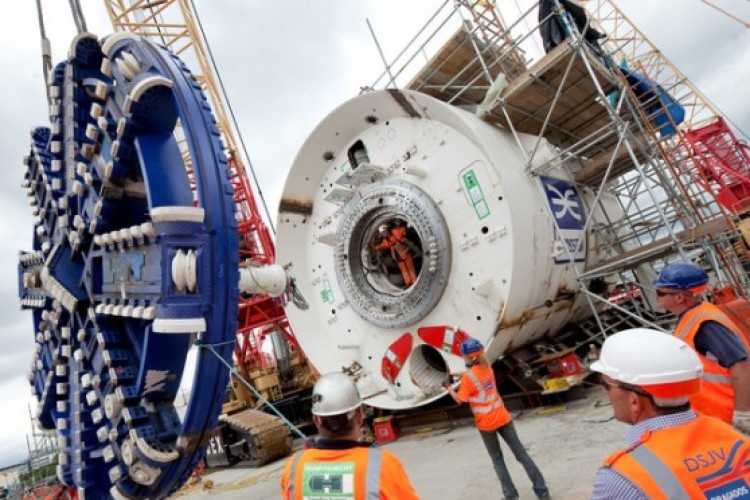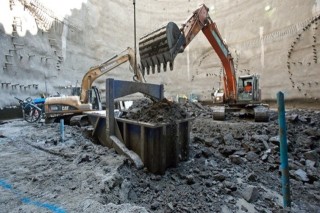More than 250 people are now working at the Limmo Peninsula site with that number expected to peak at around 500 people at the height of construction.
The larger of the two shafts is 30m diameter and 44m deep. Construction has now started on two mined tunnels that will connect the two shafts.
Assembly of Crossrail’s third tunnel boring machine (TBM), Elizabeth, is also underway. The large blue cutterhead was installed earlier this week with the TBM now visible from the Docklands Light Railway. During the coming months, the 150m-long machine will be assembled and tested before being taken apart again and lowered in sections into the two shafts.
Crossrail’s eastern tunnels will run for 8.3km from Docklands to Farringdon where they will join with the western tunnels from Paddington.

Elsewhere on the project, construction of a new jetty also began this week at Instone Wharf. This will enable excavated material to be transported by ship rather than road, removing 30,000 lorries from east London roads. Around 1.2 million tonnes of excavated material will be transported by boat.
Construction of a 100m x 9m muck pit has also begun this week. The pit will store excavated material when the tide is too low or there is no ship at the jetty.
Crossrail’s eastern tunnels project manager Peter Main said: “We are now gearing up for the start of Crossrail tunnelling in east London. Work to construct two large launch shafts is now complete with assembly of the first of our tunnel boring machines now well underway. We understand how critical it is to limit the impact of Crossrail's construction on local communities and have planned to transport the excavated material from the eastern tunnels by boat from Instone Wharf, removing the need for more than 30,000 lorry journeys in east London. We will also deliver 120,000 concrete tunnel segments by boat from Chatham Dockyard to further reduce our local impact.”
Excavated material will be extracted from the eastern tunnels via a high angle conveyer, traveling up the shaft and under the Lower Lee Crossing to the new jetty at Instone Wharf. The material will then be loaded directly onto ships and transported to Wallasea Island in Essex where it be used to create a new 1,500 acre RSPB nature reserve.
Got a story? Email news@theconstructionindex.co.uk
.png)



